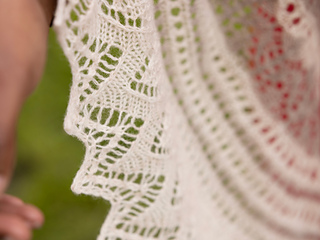patterns >  Filcolana and 1 more...
Filcolana and 1 more...
> Urania






Urania
The shawl is worked from the middle of the neck and out towards the edge.
The pattern alternates between the eyelet pattern according to the chart and short “between pieces”, according to the description.
Finally, the shawl is bound off by knitting an eyelet pattern edge sideways. The edge is also worked according to the chart.
Sophie Brahe is considered the first female Danish researcher and also one of the first female Danish authors.
Sophie Brahe was Tycho Brahe’s younger sister and shared his keen interest in astronomy, and she helped her brother with astronomical observations.
Sophie often went to Uranienborg in Hven, where her brother took her seriously and invited her to contribute to the scientific environment, where she went by the name Urania, after the
muse of astronomy.
When looking at portraits of Sophie Brahe, the most striking thing is the finely laced ruff, the beautiful laced cuffs, and head accessories that were part of the fashion of Renaissance nobility.
The Urania shawl lets the light shine through a fine, almost lacy, eyelet pattern like the stars Sophie loved to study.
1662 projects
stashed
934 times
- First published: August 2024
- Page created: February 5, 2025
- visits in the last 24 hours
- visitors right now




